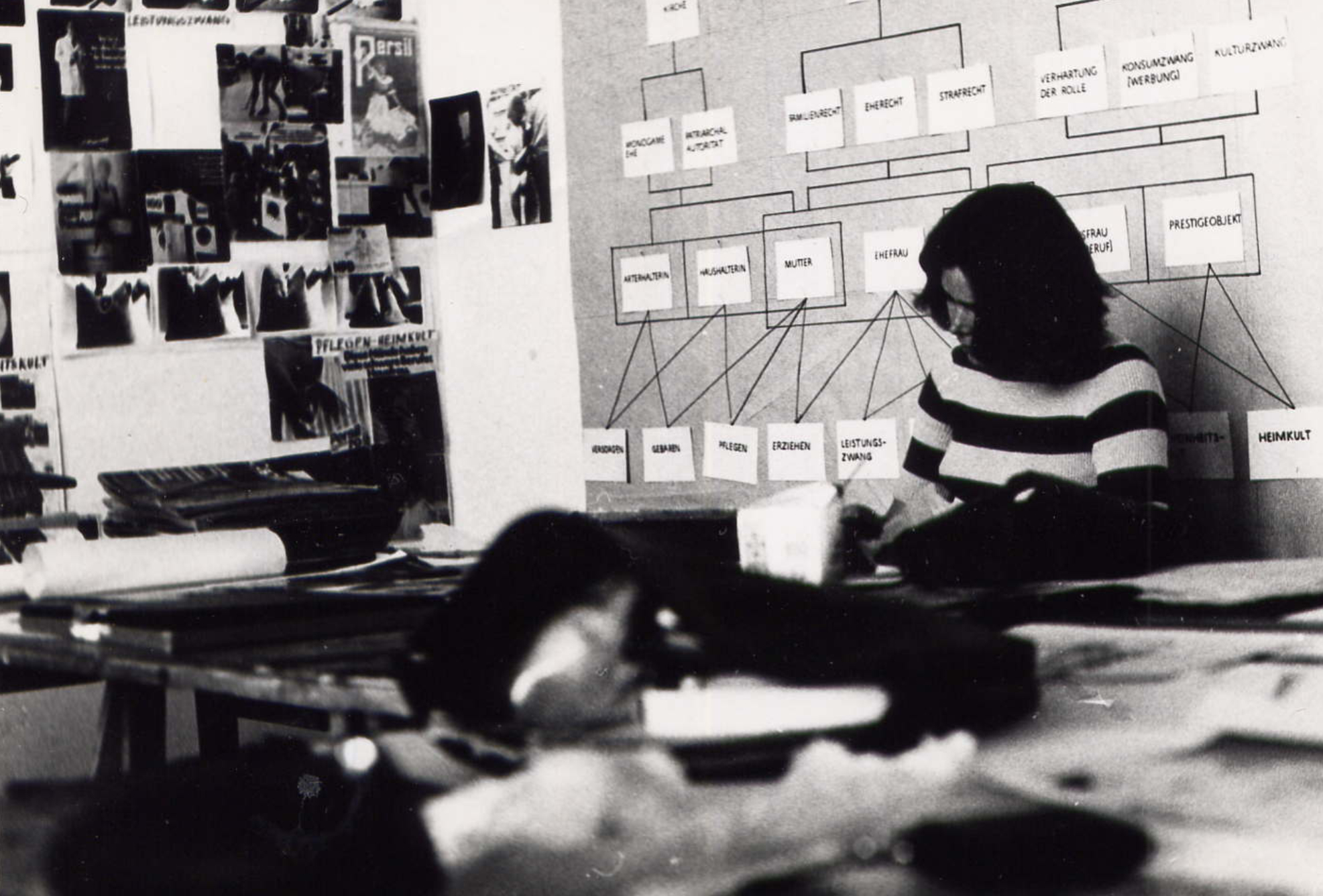Environment
On the situation of women in the family
Project group of the HdK Berlin

The period 1968 – 1974, while studying at the HdK (now UDK) Berlin, was shaped by current political discussions, combined with a new search for meaning as an artist.
The guest lecturer Dr Georg Kiefer gave a lecture on interdisciplinary project work. Based on his suggestions, we formed 3 women: Antonia Wernery, Brigitte Mauch and I, the project group, -the emancipation of women-, with the working title -the EMMAS-.
The ideology criticism was the guide for the visualization



We examined the reality of women at work and in the family: we worked our way through statistics, family and criminal law and read relevant literature. In a diagram we visualized the social network of church and state, which the women set to the roles of mother, housewife, sexual object. We found the same stereotypes in the advertising images. From the analysis of advertising, we developed the GUIDELINES of the role assignments in which the sexism of the mass media is expressed. The diagram formed the basis for a collection of ideas.
Idea collection of role assignments: mother housewife sexual object
Women’s collective in art



We wanted to combine personal development and artistic work as a collective. The respective ideas and sketches were discussed together and further processed artistically. Although we had different artistic handwritings and preferences, there never was a conflict. On the contrary, we were always open to mutual interventions and changes in order to work out the most appropriate visualization. We experimented with drawing, painting, collage and screen printing.
In formal terms, we also experimented with the styles: critical realism, DaDa collages, dolls and objects, assembly techniques and the current Pop Art.



Environment 1973

The idea arose to implement the content in an environment. The advertising analysis should be integrated into the ensemble as a slide projection. The exhibition was finished in 1973.
Censorship of the exhibition
The promised exhibition for February 1973 in the Landesbildstelle, Berlin was canceled shortly before the opening by the then school senator Löffler due to moral concerns.
The domestic rape scene was the reason for the ban on exhibition in public spaces.
Spontaneously, without official permission, we set up the exhibition in the entrance hall of the HdK for one day, contrary to expectations, the press response was great 10.2. the BZ published the “forbidden” sequence on the front page.

Style of agitation through provocation
Our claim to agitation through provocation met with a misunderstanding among many. The exhibition was also controversial among feminists, who found the portrayals of women too ugly. They demanded “positive” figures of identification.
The provocative potential of this work was not only directed against the patriarchal structures, but should also be directed against our conditioning as women: through the deconstruction of “female” strategies and models.

Exhibited so far:
- 1973 INTERNATIONAL WOMEN FILM SEMINAR, Berlin
- 1975-76 Protestant women’s group. Women’s centers in Berlin and the FRG.
- 1977 ARTISTS INTERNATIONAL 1877-1977, Schloss Charlottenburg Berlin and Kunstverein Frankfurt
- 1979 A CRITICAL VIEW – UGLY REALISM 20S – 70S, London
- 1991 WOMEN MUSEUM, Bonn
I would like to refer to the publication by Dr. MONIKA KAISER -NEW Occupation of the Art Space- published in the -transcript- Edition Museum.
WOMEN ARTISTS INTERNATIONAL 1877-1977
1. Feminist art exhibition in Germany (Berlin and Frankfurt)
THE HIDDEN MUSEUM 1985-87
2. Female art exhibition in Berlin and Oberhausen
Review and remembrance

Birgit Kleber (Fotografin), Prof.,Dr. Tina Thürmer-Rohr (Dozentin), Evelyn Kuwertz (Malerin), Alexandra Goy (Anwältin), Gisela Breitling (Malerin, Autorin)